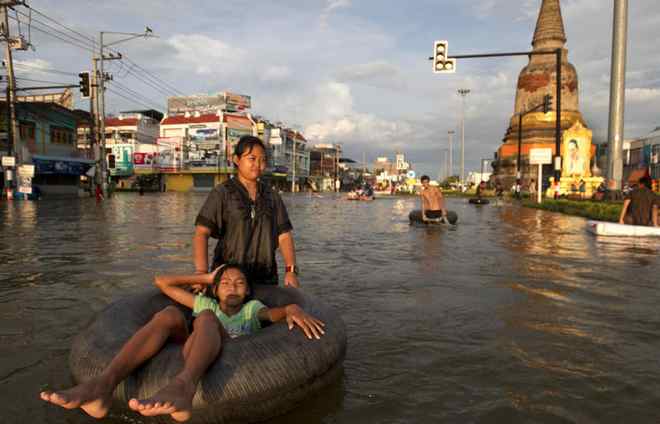The U.N. General Assembly declared 2013 the International Year of Water Cooperation. And the theme of this year’s World Water Week, September 1st-September 7th, is “Water Cooperation: Building Partnerships.” 768 million people do not have access to clean water, and two and a half billion people do not have access to adequate sanitation facilities. Meanwhile, U.N. Water estimates that the food sector contributes 40 percent of organic water pollutants in industrialized countries, and 54 percent in developing countries. During World Water Week, Food Tank will highlight research and innovations that are working around the world to conserve water resources and make clean water available to everyone. Research institutions, private businesses, governments, and the donor community can work together to scale these innovations up and alleviate global water scarcity.
Approximately 768 million people lack access to clean water – 200 million more than the total population of North America. With relatively fixed water reserves, growing global populations will exacerbate water scarcity issues, fueling the international demand for innovative water purification processes. Demand for clean water for agriculture, drinking water, and cooking are increasing – by 2050, there will be a 19 percent increase in water for agricultural production. Many organizations and individuals are taking the leap to spearhead new purification initiatives to improve accessibility, adapt to climate change, and heighten awareness of water issues.
Kenya, a country experiencing significant population expansion, failing infrastructure, and variable climate events, faces the possibility of not meeting the Millennium Development Goal to halve their population without access to clean water by 2015. In response, a group of students at the Rose-Hulman Institute of Technology in Terre Haute, Indiana created a purification device to increase clean water accessibility. This group of students invented a cost-effective solar-powered water purifier with help from a foreign exchange student, Francis Kimani Mbugua from Egerton University in Nakuru, Kenya. The contaminated water is purified through two plastic buckets, carefully designed using tools and materials easily accessible and affordable in Kenya. Innovations using local knowledge about tradition and culture can successfully increase clean water accessibility in countries of need.
Erratic climate change patterns also exacerbate clean water scarcity around the world. Extreme flooding can contaminate freshwater supplies and increase the spread of diseases. In an effort to address the adverse effects of climate change, the EM Research Organization (EMRO) has created mud balls containing thousands of microbes and useful bacteria to be thrown into floodwaters to purify and sanitize. EMRO’s mud balls are being used in 120 countries around the world, particularly in Thailand, a country plagued with massive flooding that has taken hundreds of lives. Whether or not the mud balls will be highly effective in large, polluted floodwaters is still not determined, with studies to verify their effectiveness still outstanding. Regardless, EMRO’s mud balls serve as a symbol of hope and innovation for the most pressing future climate change consequences.
According to U.N. Water, two-thirds of the world population could be under water stress conditions by 2025. While the Millennium Development Goals have lead countries to major improvements since 1990, a primary focus on clean water accessibility still needs to be a priority. The United Nations International Children’s Emergency Fund (UNICEF), with the help of creator Andreas Hamma, hopes to generate more awareness on the issue through their invention that squeezes sweat and perspiration from clothing to filter into drinking water. The mechanical machine can produce about 10 milliliters of drinking water per perspired t-shirt. While the machine will not be mass-produced anytime soon, the concept can increase awareness regarding the need for cleaner water in the future.















